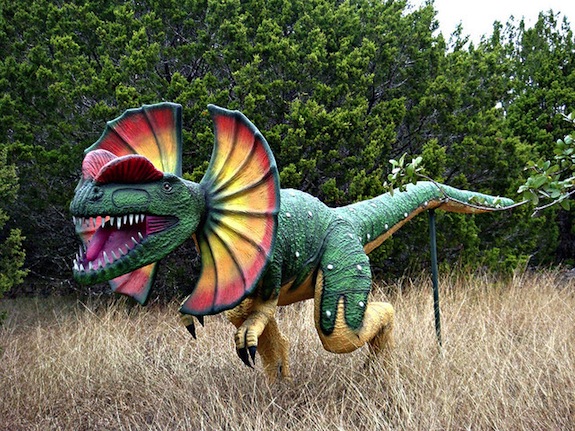Resurrecting Extinct Species Is Conservation’s Next Frontier
Some of the world’s experts in endangered and extinct species will gather for a conference aimed at figuring out the who, what, when and where behind resurrecting extinct species

Image: CameliaTWU
In two days, some of the world’s experts in endangered and extinct species will gather in Washington DC for TEDx DeExtinction—a conference aimed at figuring out the who, what, when and where behind resurrecting extinct species.
From the conference website:
Rapid advances in molecular biology are converging with new perspectives in conservation biology to create a new field called “de-extinction.” Now is the time to begin public discussion of how de-extinction projects can best proceed responsibly.
There are a lot questions about just which species to bring back, how to do it and whether or not this whole thing makes any sense:
At National Geographic, dinosaur blogger Brian Switek questions the ethics of bringing back the Woolly Mammoth:
To bring back a species that no longer has a place in the world would be irresponsible and undercuts the moral imperative that deextinction advocates so often rely on to make their case. Indeed, one of the primary arguments for deextinction is that we must pay penance by restoring animals that previous generations of humans have wiped out, yet we’d only repeat our mistakes if we brought back a species without consideration of the creature’s future survival on a changing planet. Trying to replicate the Ice Age doesn’t make much sense when our species is hurtling the planet towards a greenhouse world.
The Woolly Mammoth is, indeed, on the de-exctinctioners list of potential species to revive. Along with it are:
MARSUPIALS: Thylacine (Tasmanian tiger)
SEA MAMMALS: Steller’s sea cow, Caribbean monk seal, Chinese river dolphin (baiji)
PACIFIC ISLAND BIRDS: Huia (New Zealand), O’o (Hawaii)
PLANTS: Easter Island palm
PLEISTOCENE MEGAFAUNA: Woolly mammoth, Mastodon, Smilodon (saber-toothed cat)
BIRDS OF AMERICAS: Passenger pigeon, Carolina parakeet, Cuban red macaw, Ivory-billed woodpecker, Imperial woodpecker, Dusky seaside sparrow, Heath hen, Labrador duck
AFRICAN ANIMALS: Quagga (plains zebra)
LARGE FLIGHTLESS BIRDS: Dodo, Great auk, New Zealand giant moa, Madagascar elephant bird
EUROPEAN ANIMALS: Aurochs, Pyrenean ibex (bucardo)
INSECTS: Xerces blue butterfly
One of the questions the de-extinction people get asked a lot goes something like: “So, basically, it’s like Jurassic Park, but with more recently extinct animals, right?” Here’s what they say:
It was a wonderful movie, which introduced the world to the idea of de-extinction back in 1993. Its science fiction is quite different from current reality, though. First, no dinosuars—sorry! No recoverable DNA has been found in dinosaur fossils (nor in amber-encased mosquitoes). Robert Lanza observes, “You can’t clone from stone.”
It would be way cooler if they did bring back dinosaurs, though. Here, the animation studio explaining the various stages the spitting Dilophosaurus went through before it hit the big screen.
Bringing back the Pyrenean ibex probably won’t be much like this, though. Building a working Dilophosaurus is probably way easier than figuring out how to resurrect the Great auk or the Dodo. For one thing, there will be less robotics involved.
More from Smithsonain.com:
When Will There Be Herds of Mammoths?
How to Bring Dinosaurs Back to Life
/https://tf-cmsv2-smithsonianmag-media.s3.amazonaws.com/accounts/headshot/Rose-Eveleth-240.jpg)
/https://tf-cmsv2-smithsonianmag-media.s3.amazonaws.com/accounts/headshot/Rose-Eveleth-240.jpg)